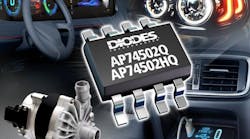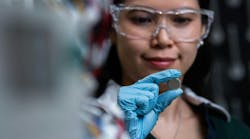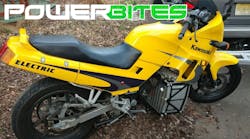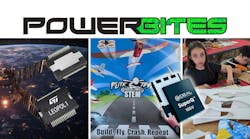Photo-Isolated Drivers Enhance Switching Efficiency of MOSFETs and IGBTs
Toshiba Electronics’ TLP579xH series of optically isolated drivers can drive high-voltage power devices from the low-voltage control side through isolation with high efficiency and stable propagation delay. They also deliver more accurate performance over a wide temperature range.
The devices are suitable for driving SiC MOSFETs and IGBTs in green-energy and factory-automation applications, including industrial photovoltaic (PV) inverters, uninterruptible power supplies (UPSs), and electric-vehicle (EV) charging stations, which operate in harsh thermal environments.
In terms of performance, the TLP5791H offers −1.0/+1.0 A for peak high-level/low-level output current (IOLH/IOHL). Undervoltage lockout (UVLO) threshold voltage is 9.5 V (max.) (VUVLO+) and of 7.5 V (min.) (VUVLO-), and UVLO hysteresis voltage is 0.5 V (typ.) (VUVLOHYS).
With the TLP5794H, the peak output current spans from −6.0/+4.0 A for IOLH/IOHL, with a VUVLO+ of 13.5 V (max.), a VUVLO- of 9.5 V (min.), and VUVLOHYS of 1.5 V (typ.).
The TLP5795H is capable of −4.5/+5.3 A for peak high-level/low-level output current (IOLH/IOHL), with a VUVLO+ of 13.5 V (max.), a VUVLO- of 11.1 V (min.), and VUVLOHYS of 1.0 V (typ.).
All devices feature a more efficient optical coupling that offers stable propagation delay characteristics, exhibiting minimal variations across a wide temperature range (−40 to +125°C) and thus ensuring stable operation in harsh industrial environments. In addition, these rail-to-rail output devices introduce significantly less voltage drop in applications that require circuits to operate at low voltages or to process signals across the entire range of supply voltages.
The TLP579xH series is housed in a small SO6L package, contributing to improved flexibility in component placement on the PCB. In addition, the new products feature a minimum creepage distance of 8.0 mm and an isolation voltage of 5,000 V RMS, enabling them to be used in equipment that requires high isolation performance.
Next in This Edition of PowerBites
More PowerBites
About the Author
Lee Goldberg
Contributing Editor
Lee Goldberg is a self-identified “Recovering Engineer,” Maker/Hacker, Green-Tech Maven, Aviator, Gadfly, and Geek Dad. He spent the first 18 years of his career helping design microprocessors, embedded systems, renewable energy applications, and the occasional interplanetary spacecraft. After trading his ‘scope and soldering iron for a keyboard and a second career as a tech journalist, he’s spent the next two decades at several print and online engineering publications.
Lee’s current focus is power electronics, especially the technologies involved with energy efficiency, energy management, and renewable energy. This dovetails with his coverage of sustainable technologies and various environmental and social issues within the engineering community that he began in 1996. Lee also covers 3D printers, open-source hardware, and other Maker/Hacker technologies.
Lee holds a BSEE in Electrical Engineering from Thomas Edison College, and participated in a colloquium on technology, society, and the environment at Goddard College’s Institute for Social Ecology. His book, “Green Electronics/Green Bottom Line - A Commonsense Guide To Environmentally Responsible Engineering and Management,” was published by Newnes Press.
Lee, his wife Catherine, and his daughter Anwyn currently reside in the outskirts of Princeton N.J., where they masquerade as a typical suburban family.
Lee also writes the regular PowerBites series.





